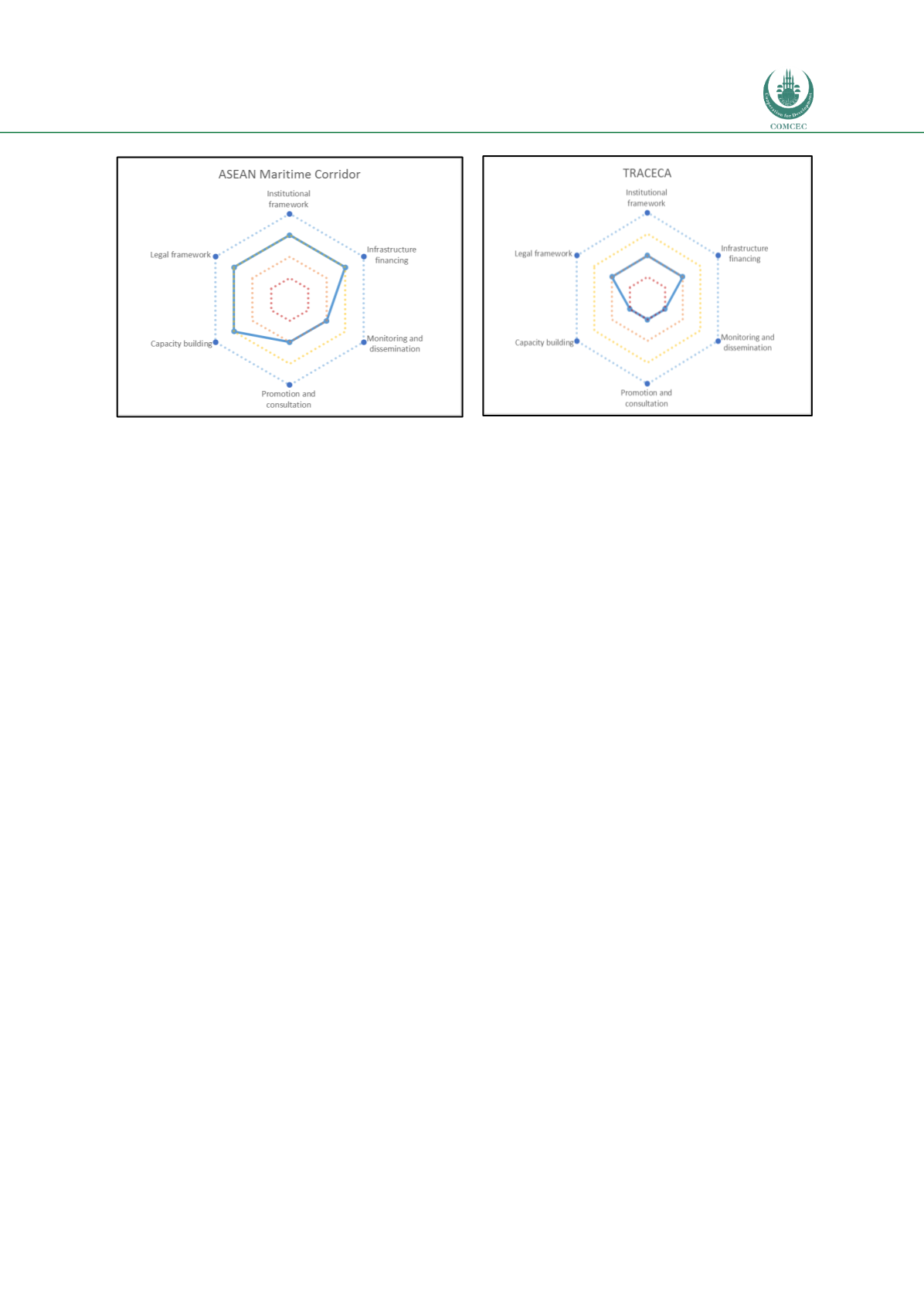

Governance of Transport Corridors in OIC Member States:
Challenges, Cases and Policy Lessons
125
Source: consortium.
It can be concluded from Figure 8.2 that vast differences are noticed between the corridors reviewed:
Corridor governance of the
TEN-T
programme is fully at an integration level. It should be noted that
this has developed over time, starting from a governance model based on information exchange in
the early 80’s to the fully integrated governance model of today. TEN-T, EU’s common transport
infrastructure policy, is the world’s most advanced system of corridors in terms of the integration
of governance institutions. TEN-T is a unique case, since a legal framework for the development of
TEN-T and its institutions was already in place before a common transport policy was agreed upon
by themember states. From the willingness of themember states for joint development of transport
infrastructure towards establishing governance institutions was a relatively small step. Although
the objectives of TEN-T were established in the information exchange phase between 1985 and
1992, talks on the governance and its legal basis were largely skipped. Considering the time it has
taken the EU to develop its governance structure, lessons can be learned in terms of the gradually
developing legal basis, the institutional set-up, with corridor coordinators, facilitating dialogue
between the European Commission and the member states, the funding structure, the monitoring
system, the corridor fora and TEN-T days organised to facilitate interaction with stakeholders and
the support studies carried out to strengthen the corridor performance;
SEETO
has developed over time (after signing the MoU in 2004) into an established regional
organisation with a well-functioning governance structure. SEETO proves that countries who share
a history of internal disputes can successfully collaborate at a regional level. The common transport
(corridor) agenda, which literally connects countries and share a joint ambition to be connected to
the TEN-T, provides a strong basis for collaboration. A solid MoU and a clear institutional structure,
with a concise yet effective secretariat, in parallel with well-developed governance aspects, such as
a dedicated monitoring system, periodic reporting and a link to infrastructure financing, provides
the basis for corridor governance in line with needs of the participating countries;
The
Maputo Corridor Logistics Initiative (MCLI)
was established in 2004 by eight parties: MPDC
(Maputo Port Development Company), MIPS (Mozambique International Port Services), TCM (Coal
Terminal Matola), TRAC (Trans-Africa Concessions), MMC (Manganese Metal Company), TSB
(sugar), TAL (Trans Africa Logistics), and later also the Department of Transport of South Africa,
which joined MCLI in 2006. The majority of the founders were private sector investors, service
providers and cargo owners operating along the corridor. The funding of MCLI is guaranteed via
















